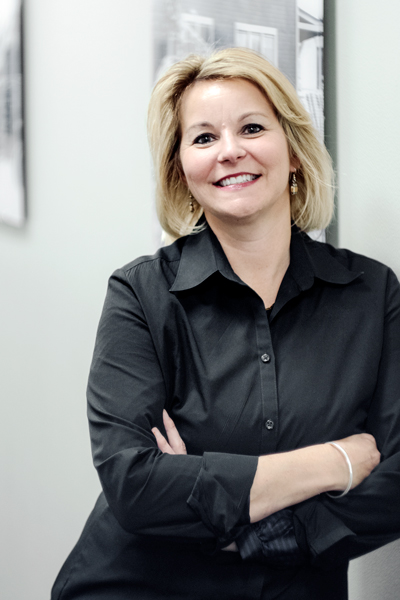First thing’s first: The Oshkosh Corporation is not OshKosh B’gosh, the ubiquitous manufacturer of kids’ clothing. The Oshkosh Corporation, as Angie Zeigler puts it, saves lives, builds and serves its communities, and protects customers with the “badass vehicles” it makes. Specifically, the multibillion-dollar, 15,000-person organization designs and builds heavy-duty vehicles—from defense vehicles to firetrucks—and access equipment. You wouldn’t think the two would get confused, but it happens.
It’s likely to occur a lot less these days, however, as the company is in the midst of what Zeigler calls “a true transformation.” Zeigler, the vice president of talent management, along with CEO Wilson Jones, who stepped into the role in 2016, has spent the last several years facilitating the journey of instituting a “People First culture.” In several ways, this cultural shift serves as the bedrock for all the ways Oshkosh has evolved into a more unified, transparent company.

“I don’t know that we had an intentional way of thinking about our culture here in the past,” Zeigler says. “Wilson had a very clear vision about how he wanted the company to operate, but also how he wanted the people who work here to feel. What he really wanted to do was focus on the people piece, because he truly believes that if you take care of the people, they will take care of the customers, which will take care of the shareholders, and in turn take care of our communities.”
While Jones wanted People First to remain malleable as a cultural touchstone, he and Zeigler worked close with Oshkosh’s leadership to establish some key behaviors that they would first focus on themselves. “We wanted to show our leaders what it looks like to be a good leadership team,” Zeigler says.
This alone was a big step forward for Oshkosh, which Zeigler describes as previously having been very siloed and performance driven. Jones’ first year found he and the executive leadership team developing and articulating four key behaviors; respect and trust each other; be aligned; be collaborative; and have fun. The result was, in Zeigler’s words, a culture that was “much more open and collaborative in the way that we shared information.” Strategies were shared, strengths were leveraged in different areas, and departments were cross-pollinated.
“Nobody had ever questioned the idea of a company culture and how that gets created,” Zeigler says. “There was a recognition that we owned it and we could actually change it.”
Change it they did. Zeigler’s drawn upon the concept of People First and its behavioral guideposts while instituting a number of different initiatives. One of them is a clear set of competencies on which employees are assessed. Using Bob Chapman’s 2015 book Everybody Matters as inspiration, Zeigler and her peers looked at how the company’s existing competency models could be beefed up to better address the team on a personal level, rather than simply a technical one.
To bring these competencies to life, Zeigler’s learning team developed an experiential leadership development program aimed at the top 370 leaders across the company. This program focuses on personal leadership through self-reflection and how to lead others by leveraging competencies. The executive team is engaged in many aspects of the program, so they can hear and see first-hand how their leaders are learning. This program has allowed richer, more focused conversations between team members, and it’s also changing the way the executive team talks about leadership.
For example, Zeigler says succession planning in the organization has become oriented around these competencies. “We started to introduce leadership questions into those conversations, to say, ‘Well, they might be technically savvy, but are they really good leaders? How do they engage their people?’”
Zeigler also worked with outside training programs, such as the Center for Professional and Executive Development at the Wisconsin School of Business. “Angie and Oshkosh Corporation have been a wonderful partner from day one,” says Mark Seifert, the center’s director of corporate learning. “They live the ‘people first’ philosophy, which was apparent as we together worked to customize and deliver sessions aimed to remove silos, connect people and functions, and develop the leadership skills of their most important asset.”
The People First philosophies are also being integrated into a number of other processes within the company, such as Oshkosh’s talent acquisition efforts. The talent acquisition team, for example, used to be business-unit-focused, but they’ve now coalesced into a Center of Excellence that allows for greater functional collaboration and a more effective distribution of talent. New talent is given a stronger, more transparent view of the organization when interviewed, as the questions are born straight from the new competencies. The result is a more unified, organized workplace, which is a tough thing to manage in a company as large as Oshkosh.
Oshkosh is also working to corral its myriad training and educational programs into an on-site university. “We want it to be something that people feel is not only an online learning system, but also a place that you can go to access all kinds of learning,” Zeigler says, noting that next fall the new Oshkosh Global headquarters will debut three classrooms “right smack in the middle of the building.”
Many of the programs that will unfold inside of these classrooms are directly related to the company’s newfound vision. Curriculum was specifically designed to support the new competencies, and a “leadership academy” will serve to bolster the People First cultural perspective all the way down through the organization.
Zeigler admits that these kinds of changes are tough to enact in a company as large as Oshkosh, and she credits Jones and the executive leadership team for being so committed to making it all work. It’s paid off, too. Glassdoor, the workplace review website, recently named Jones as one of its top 100 CEOs, and Oshkosh was also was named as one of Ethisphere’s World’s Most Ethical Companies for three years running. As Oshkosh’s cultural reinvigoration proves, change begins at the top.
Photo courtesy of Oshkosh Corporation

